“On leaving for a walk one should never be too sure of returning home, not only because something may happen to one personally, but also because the house may cease to exist. Our walk was to last a long time.”
—Czesław Miłosz
In Andrzej Wajda’s Kanał, likely the most famous film depicting the Second World War’s Warsaw Uprising, the gentle composer Michał recites lines from Dante describing the surreal torment of sinners consigned to eternal suffering in the Inferno. At this point in the movie, Michał has fled into the sewers beneath the Polish capital of Warsaw along with a group of the nation’s insurgents, the Armia Krajowa (the AK, or Home Army), after a hopeless battle against Nazi occupiers forced them literally, underground. The composer’s wide eyes seem to stretch impossibly at the horror of the nightmarish situation he’s found himself within: AK members, soaked in sewage water and choking on ammonia, are lost in the stinking labyrinth beneath their city. Above them, the Warsaw Uprising is closing in on its failed conclusion after two months of fighting the Nazis without the expected assistance of the Soviet Red Army or the Allied forces. If they stay underground much longer, they’ll die; if they manage to find their way back out of the sewers—the kanał—their odds aren’t much better.
Wajda’s film was shot in 1956 and released in ’57, only a little more than a decade after the actual Warsaw Uprising took place, from August 1st to October 2nd, 1944. As historian Norman Davies notes in Rising ’44: The Battle for Warsaw, Kanał “was the very first portrayal of the Rising on screen.” Despite its implicit critique of the Soviet Union’s failure to assist in the Uprising, the movie managed to bypass Poland’s cCommunist censors because, as Davies posits, “it depicted the searing tragedy of the [AK] insurgents, and by implication the futility of their sacrifice.”
Warsaw, the recent game from Polish studio Pixelated Milk, is similarly concerned with portraying the Uprising as hellish, tragic, and futile. Unlike the tactics games it most resembles—Darkest Dungeon in particular, but also XCOM and The Banner Saga—most of those who play Warsaw know that there will be no real victory for their characters, no matter how well they play. Krzysztof Paplinski, a designer and producer on Warsaw, told me in an email interview that his team was well aware of the futility inherent to the game’s setting.
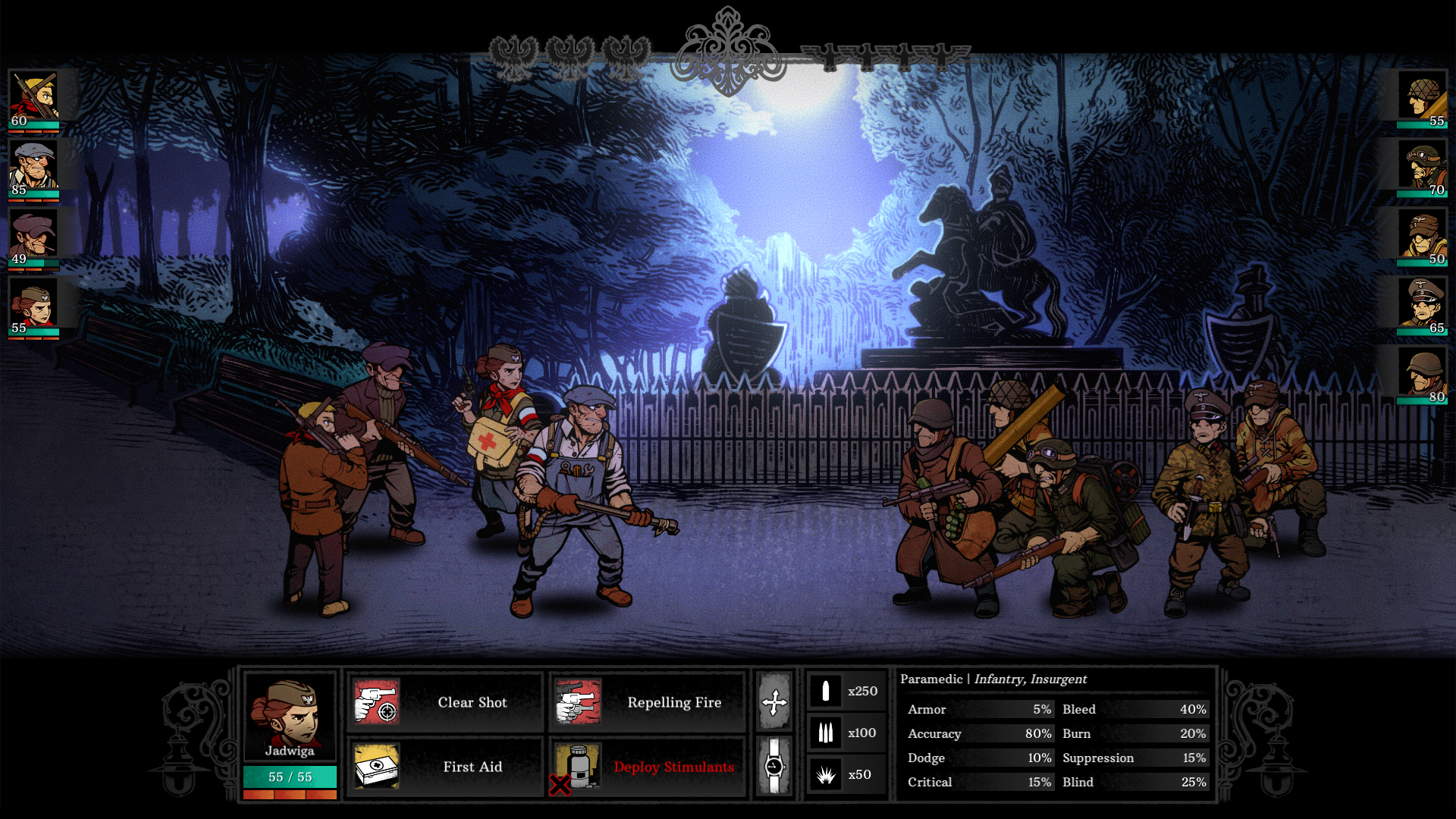
Just as in the real Uprising, Warsaw‘s Polish fighters become increasingly desperate over time. Paplinski said Pixelated Milk expects players to be able to finish the game, “but not at the first, second, or third try.” There are no options for harder or easier modes, only a starting point that provides a tutorial and three predetermined unit types (in Warsaw, each of these is a named character). “The Uprising started with insurgents taking on lighter armored and [less] trained soldiers,” Paplinski explained, noting that later the Home Army would “face armored, specialized, and better trained and equipped units. The same shift in difficulty level happens in game.”
In Warsaw, the player issues commands to their AK units in turn-based battles or manages their limited supplies by scavenging across the city’s map before and after firefights. Between missions, a screen shows the insurgents in their hideout and provides an opportunity to change equipment loadouts, distribute scant ammunition amongst the combatants, and monitor a map that shows how each city district’s morale and ability to keep fighting is holding up. Characters die easily while out trying to secure fresh supplies or attack Nazi soldiers. Once they fall in battle, often because the player has had to bring them into combat without sufficient ammo or a full health bar, they’re gone from the game. A Catholic priest logs their names back at the hideout in a list that grows longer as the city falls, district by district.
This level of challenge is deliberate. Rather than offer customizable modes, Warsaw “just becomes increasingly more difficult as you progress,” Paplinski wrote. “In this regard it represents the Uprising to an extent.” Making it to the end of the Uprising’s 63 days isn’t impossible, but it can take many, many tries. Aside from representing the bleak reality of the Uprising, Warsaw is also faced with communicating the event’s complex history. Pixelated Milk referenced many books, films, “online resources, historical photographs, and sketches” alongside visits to Warsaw’s Rising Museum and insight from historical consultants in their work. (“Fortunately,” Paplinski told me, “there is [a lot] of well-preserved source material from that time.”) The team also had to recognize, though, that many players may never have heard of the Uprising at all.
“We never assume that anyone who picks up the game knows about [the] Warsaw Uprising,” Paplinski said. “One thing we learned on the media tours and meetings with the players is that most people don’t really care for the history of other countries. Sometimes people don’t even care about their own.” Choosing to focus on making a game that anyone, regardless of their knowledge of the historical setting, could enjoy on its own merits, Pixelated Milk “wanted to avoid having a Wiki-level of data and information in the game.”
“But if you get pulled in through the gameplay, the visuals, the combat,” Paplinski said, “you will have learned a thing or two about a historical event that shaped the history of not only Warsaw, but the whole country as well.”
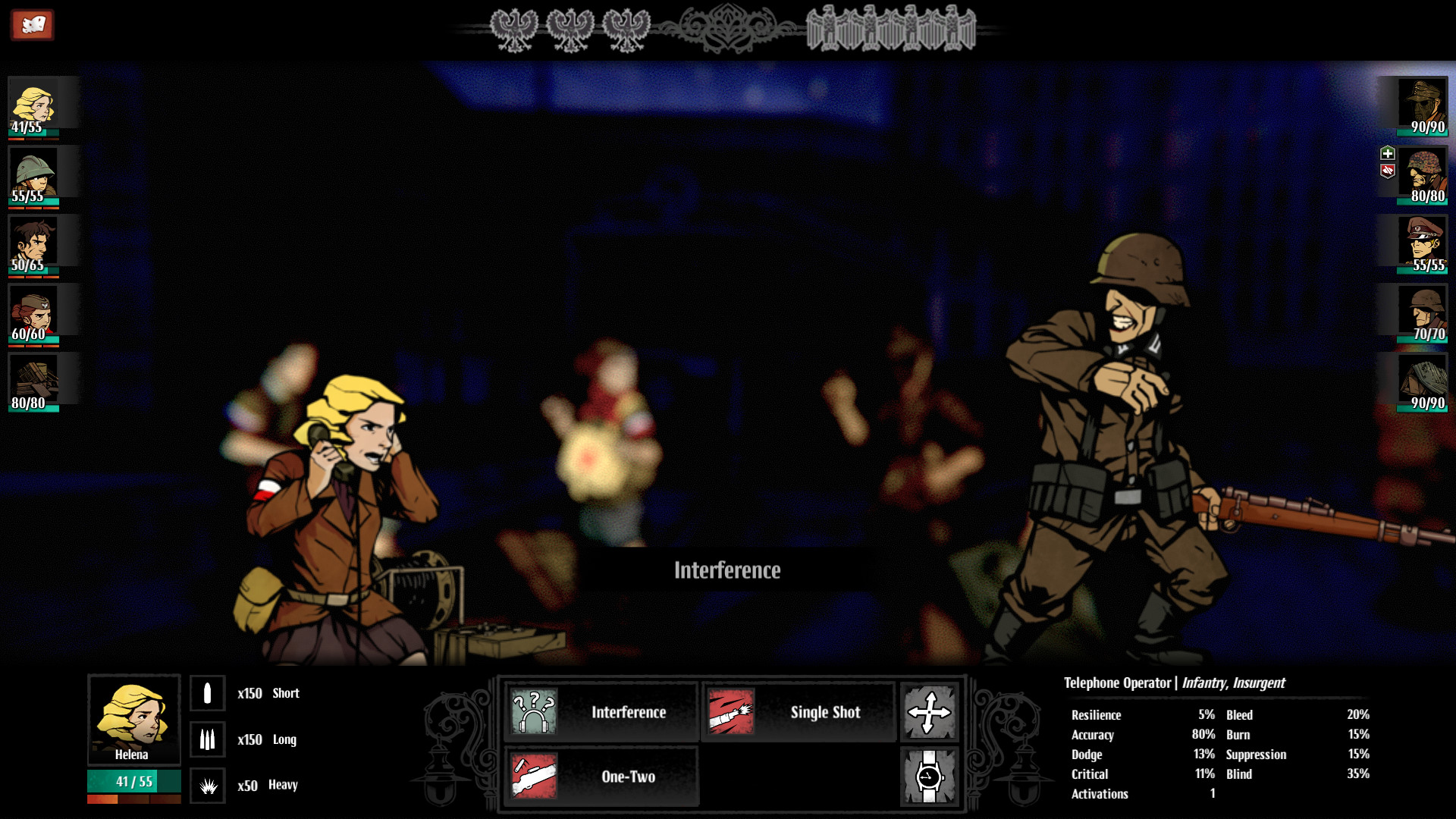
The Warsaw Uprising can only be fully understood within the context of Poland’s 20th century history. At the end of the First World War, the sovereign Second Polish Republic was established, recreating an independent nation that had ceased to exist after the last of its territory was absorbed in 1795 as the last of three land “partitions” by the neighboring powers of Austria, Prussia, and Russia. This Poland’s freedom, punctuated by the Polish-Soviet War of 1919 to 1921 and a military coup in 1926, lasted only until September 1939, when a joint invasion by Nazi Germany and the Soviet Union marked the beginning of the Second World War. Poland was to be occupied directly until 1945 and would then continue to exist as a Soviet satellite state until its first free elections were held in late 1990. By the time the War ended, an estimated 5.6 to 5.8 million Poles—over half of which were Polish Jews—had died.
The particular brutality of Poland’s occupation can be explained both by nearly a century of what Davies calls “an unprecedented degree of mutual antagonism” between it and Germany as well as the Nazi plan to create the Lebensraum—an expanded “living space” that Hitler and his party believed Germany should acquire and populate with settlers. “[Poland] was inhabited … by a mixture of Slavs and Jews, both of which were classed in the Nazi handbooks as Untermenschen or ‘subhumans,'” Davies writes. “Hitler specifically ordered his minions to act with great cruelty” during the invasion and “was fully aware of the opportunities for genocide.” In German-occupied Warsaw, the Nazis swiftly constructed a ghetto to separate Polish Jews from gentiles—its population, which included 380,000 at its height, made it “the largest of some eight hundred Nazi-built ghettos in the General Government.”
The population of Warsaw, Poland’s capital, were subject to horrible persecutions, especially after the Warsaw Ghetto Uprising saw an armed resistance of Polish Jews, knowing they would soon be murdered regardless, fight back against the overwhelming numbers of the city’s Nazi occupiers for 27 days, beginning on April 19, 1943. As Davies writes, an “escalation of public violence was one of the features of German rule in Warsaw from 1943 onwards.” Despite the destruction of the Warsaw Ghetto, which was ultimately burned to the ground and left as “a silent, smouldering graveyard” as “an unspoken warning of what could happen to the city as a whole,” the city continued to defy Nazi rule. In response, toward the end of 1943, the SS began rounding up and executing Warsovians as a form of collective punishment. The site of these murders was accompanied with a display of the victims’ names, ages, and addresses alongside “a second list of names of people who were held as hostages and who would automatically be shot if anyone should dare to retaliate.”
The 1944 Warsaw Uprising, timed to coincide with the Red Army’s approach to the city and, presumably, the support of Poland’s exiled government in London and the Allies, broke out as both a retaliation against the occupying force responsible for this misery and an attempt to take control of the nation’s capital and install a sovereign government before the Soviets settled in the city. Knowing that even the sizable Polish Home Army—in Davies’ words, “Europe’s largest Resistance movement”—was outmatched by the German military, the Uprising was only planned to last at most five to seven days before outside help would arrive and favorable political arrangements could be made. Instead, it lasted for 63 days, the city’s fighters launching the Uprising on August 1st and eventually capitulating to the Germans on October 2nd.
In Fear: Anti-Semitism in Poland After Auschwitz—a book that seeks to unravel a topic beyond the scope of this article—author Jan T. Gross describes how, throughout the Uprising, the Red Army halted on the other side of the Vistula river, allowing the “Germans [to] slaughter Home Army soldiers and civilian inhabitants of the city alike.”
“Almost a quarter of a million people perished in the hostilities,” he adds.
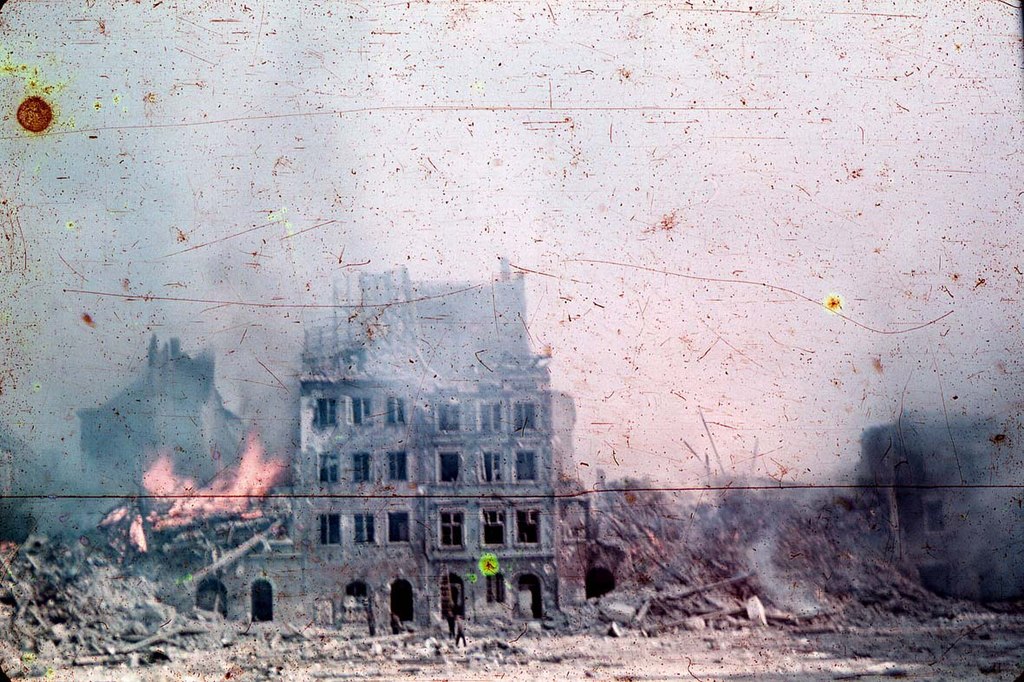
Credit: Museum of Warsaw
The Home Army was fighting against terrible odds, planning only to hold out for a limited time. Once the Uprising began, though, it continued unabated, spurned onward by initial gains in the AK’s military objectives, the expectation of reinforcements and supplies from the Allied forces, and the desire to avenge Nazi atrocities like the massacre of approximately 40,000 to 50,000 people in the Wola district within the first weeks. “On 5th August alone,” Davies writes, “An estimated 35,000 men, women, and children were shot by the SS in cold blood.”
As mentioned above, the AK struggled while the Red Army remained on the other side of the Vistula river—a choice that historians argue was taken either to allow time for its resupply and reinforcement or, as staunch anti-communists like Davies assert, a calculated decision made at Stalin’s behest to weaken both the Home Army and Nazi forces before the inevitable Soviet invasion. The aid expected to arrive from the Allies barely materialized, limited to insufficient supply drops that often ended up in German-controlled areas of the city. It wasn’t until mid-September that General Zygmunt Berling’s Soviet-controlled First Polish Army crossed the Vistula to assist the Home Army, suffering substantial losses from the Nazi’s fire. “Unlike the Home Army men, who had learned to use every inch of cover,” Davies explains, “[the First] were completely unfamiliar with the art of street fighting” and suffered heavy losses before eventually retreating. Understanding that the Uprising had failed, AK Command established terms for a capitulation, which came into effect on October 2nd. In reprisal, Warsaw’s west bank was systemically destroyed after its population was evacuated, its buildings burned and broken down by the victorious Nazi forces.
The tragedy of the Uprising is a difficult period of history to explore, and designing a game that properly communicates its events took several tries. “We felt that Warsaw‘s story is a powerful one and if we find the right way to tell it, [it] will get players invested,” Paplinski told me. “The right way meant [finding] the right genre, the right setting, and the right visual style … which, given the gravity of the subject … wasn’t very easy.” He described working on early ideas such as “a ‘Metroidvania’ type of game” that featured “a guy jumping and shooting his MP40 [submachine gun].”
“We determined that… wasn’t the most appropriate way to depict a brutal, tragic event based around urban, close quarter firefights,” Paplinski explained. Work then shifted to a “more cerebral, hex grid-based game” which, from this early point, was already designed with the knowledge that the player “will not be able to win the Uprising.” Looking to “make sure the player is attached to [the game’s] heroes and cares for them,” the studio wanted “to bring the hero characters as close to the screen as possible” and “find a more tactical approach to the gameplay.” That idea evolved into Warsaw‘s two “lanes” of combat positioning and a proposed visual style that went “against the aesthetics that are usually tied to WWII games” in favor of a “2D, vibrant” look that lands “somewhere on the intersection of [Hellboy artist] Mike Mignola, European comics, and manga.”
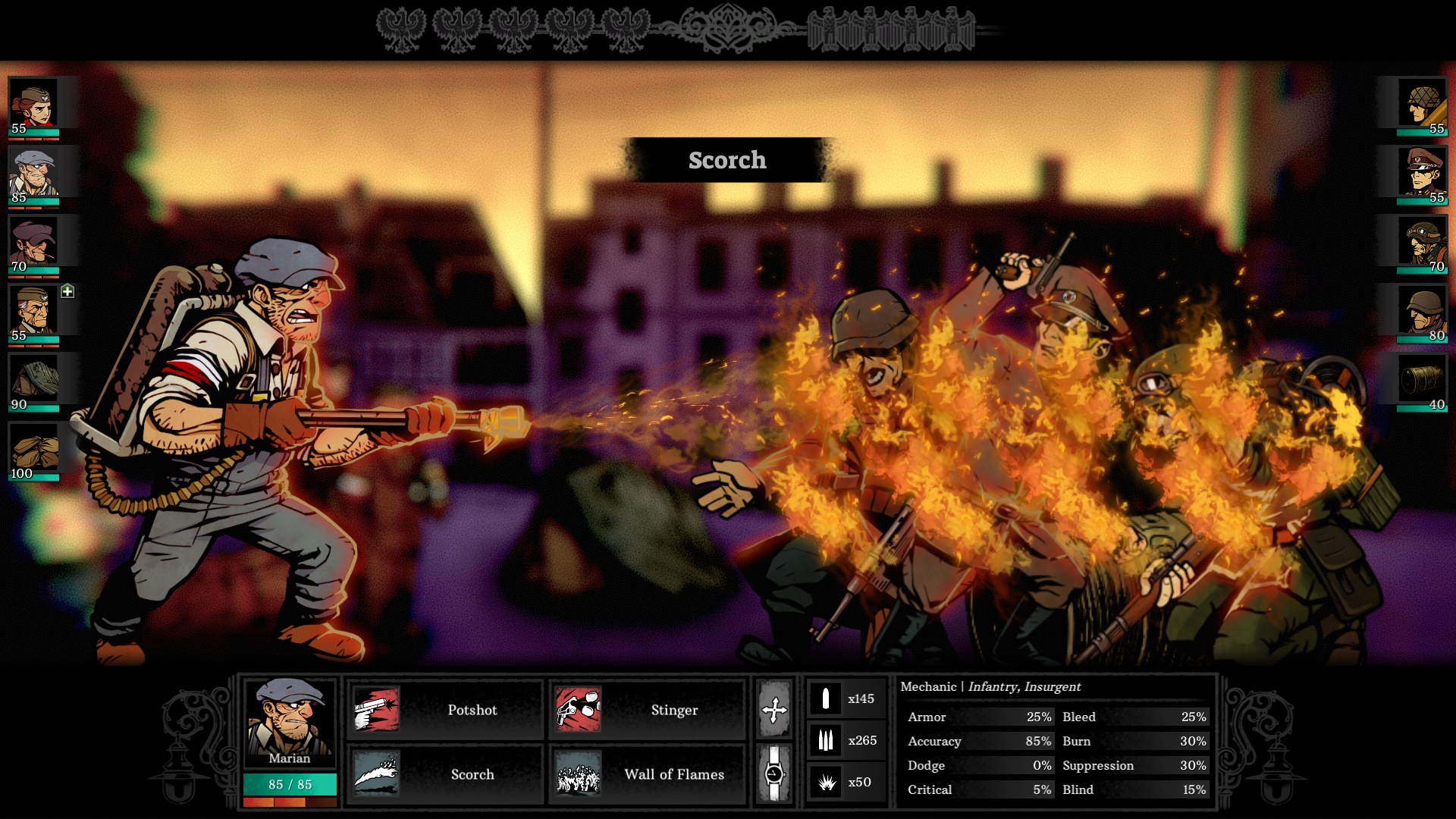
Warsaw, as mentioned above, is extremely difficult. It’s a game of disempowerment, where the narrative context colors every bit of design. A doomed uprising can’t resolve itself optimistically. By playing the game several times, trying to get closer and closer to the October 2nd Capitulation, Warsaw reinforces some of the basic realities faced by the Home Army. Because the game is designed with some random elements—from item pick-ups and character recruitment through to the short, branching text scenes that play out when returning from missions or found while moving through the city streets—it allows a considerable amount of information to be presented to audiences, too. The likelihood that finishing the game requires multiple playthroughs was “the way we wanted it,” Paplinski said. “No single team or platoon taking part in [the] Uprising knew everything, experienced everything, and had access to all the information. And since we expect [the] majority of players will not be familiar with [the] Warsaw Uprising, we want them to be able to discover new information and facts as they play it.”
Most striking among these facts are the snippets of historical fiction supplied in Warsaw‘s text scenes. Through these, the game details some of the Uprising’s horrors most directly. In one, the player discovers Jewish children who escaped the Ghetto to hide in the ruined city. With the right choices, they can be coaxed to give up the gun one of them is pointing in fear at an AK soldier. In another, a suicidal young man asks to join the Home Army in order to avenge his girlfriend’s death. Later, a child from the Uprising’s Szare Szeregi (Gray Ranks) of paramilitary girl and boy scouts might arrive to join the player’s forces or, if one of the kids is encountered in a text scene, be described as enjoying his first kill to a degree that makes the adults uncomfortable.
Even amidst this backdrop of misery, the Home Army and Warsaw’s occupied citizens aren’t depicted as impeccably honorable. The player witnesses fights between various insurgents and must make choices regarding people like a man who has been found to have beaten a Gestapo collaborator to death; the player can respond to this crime by forwarding the killer to AK Command, ordering him to be shot, or just letting him go back to his work in the Home Army as if nothing happened. The kind of confusion, terror, and desperation that characterized the real-life Uprising is, clearly, an important part of Warsaw‘s design.
Paplinski, while understanding that saying so “out of context would make for a really bad back-of-the-box quote,” told me his studio’s goal was to make something that properly represented the horror of the Uprising—something that is hopefully enjoyable but not “fun” in the traditional video game sense.
The Warsaw Uprising’s tragedy is indisputable, but its larger cultural memory, within and outside of Poland, is frequently contentious. This is largely the result of the Uprising’s tragic conclusion, the Home Army’s dissolution just two days after the liberation of Warsaw on January 19th, 1945, and the event’s place in Polish history throughout the postwar decades. The wisdom of the Uprising’s timing and planning, especially given the terrible loss of life and general misery it caused the city, has been debated ever since. Still, actual discussion of the particulars was not even officially permitted in the years following the end of the War.
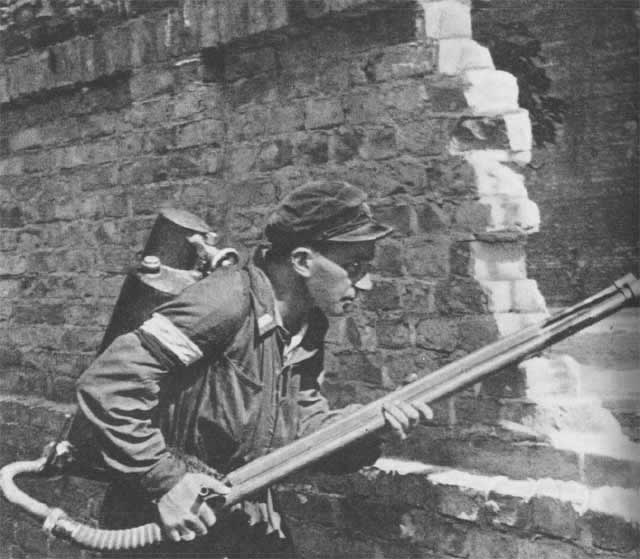
Credit: Jerzy Beeger
“Once Poland had been liberated by the Red Army in 1944-45, any earlier association with the so-called London underground was labeled a stigma and a liability by the emergent Communist organizers of the public order,” Gross writes in Fear. “[Home Army veterans] had to either hide their past or else risk arrest, internment, censure, or humiliation.” Its leaders—as in the case of commanding general Leopold Okulicki, who Gross notes “died in a Soviet prison following conviction in the infamous [June 1945 show trial] ‘Trial of the Sixteen’ in Moscow,”—were often arrested by the Soviet secret police as potentially dangerous, subversive elements. In Rising ’44, Davies describes how following the end of the War AK veterans were subject to “political investigations, lengthy torture, secret or show trials, and judicial murder.”
In the following years, when Poland was under Soviet control and eventually formalized as the single-party Polish People’s Republic in 1952, the country’s official media channels painted the Home Army’s London-based government leaders as, in Davies’ description of the propaganda, the “lackey of the anti-Soviet Western powers” who were then “trying to provoke the Third World War” by antagonizing the USSR. This attitude would shift over the following decades, the Communist powers still characterizing the insurgent leadership as criminal throughout the late ’50s and ’60s, as Davies writes, but allowing it to become “acceptable to praise the heroism both of the common people and of the insurgents.” In the ’70s and ’80s, “reasoned discussion” was allowed and, with the end of the one-party system (Poland held democratic presidential elections in December 1990) and the Soviet Union’s dissolution, a full debate—and expansion of historical knowledge—about the Uprising became possible. The Warsaw Uprising was also, Davies suggests, an important memory for the Solidarity movement, which undermined Soviet influence and Communist government control by peaceful, determined union organizing beginning in 1980. Against severe repression and martial law, Solidarity “resolutely chose the path of non-violence,” seeing their resistance as a continuation of the Uprising’s “struggle against totalitarian rule … and against foreign domination.”
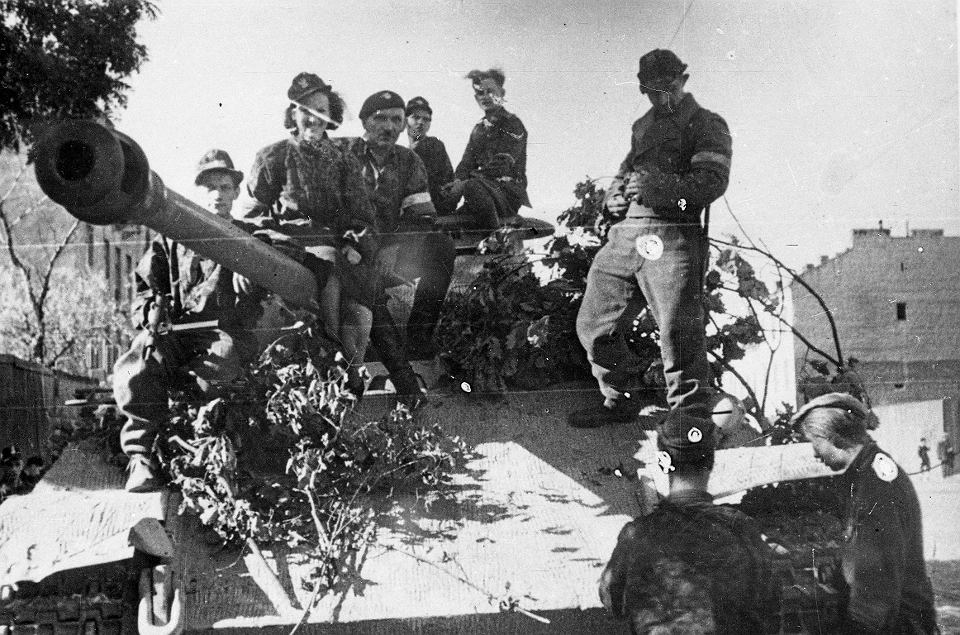
Credit: Juliusz Bogdan Deczkowski
For the modern Republic of Poland, the Warsaw Uprising has become a foundational moment in its history, inspiring national pride in the country’s resistance to Nazi rule. It also serves as a malleable political weapon. Its complexity and contradictions are used to support anti-EU propaganda and anti-Semitism (the historical conflation of Judaism and Communism, referred to as żydokumuna or Judeo-Communism, in Poland is a knotted cultural issue whose ramifications are detailed in Gross’ books Fear and Neighbors). The Uprising’s history is evoked, too, in the far-right nationalism of the governing Law and Justice (PiS) party’s horrifyingly traditionalist and increasingly authoritarian policies. The failure of Poland’s international allies to support its fight for national freedom during the Uprising—and the lack of military support and eventual postwar domination by the Soviet Union—are all tied up in what is a very-much living history. This cultural landscape is what Warsaw has entered into.
Paplinski said his studio was “100 percent sure that this will be the case” when asked whether some players will find specifics of the game’s portrayal offensive or historically misleading. Still, he said he’s happy to see the game bring the story of the Uprising “to places and people that would otherwise have never even learned about it,” citing its coverage across international media outlets. Knowing that “the subject that Warsaw portrays and the fact that it evokes strong emotions” required careful consideration, Paplinski said that Pixelated Milk was “fortunate enough” not to need to seek the many “outside financing of state grants or funds” Poland makes available to game creators.
“There is always a risk that—no matter if applying for any funds or grants is tied to specific criteria or not—the mere fact that you did apply paints a target on your back,” he said. Rather than face suspicion of their motivations as artists, the team researched and created on their own terms. This doesn’t make it an apolitical game, of course—what is and isn’t included in Warsaw speaks to the same process of historical selection that colors even the most “neutral” retelling of the past—but it does support the overall impression that it was made primarily to memorialize one of the Second World War’s frequently forgotten tragedies.
The game’s basic message—like the chilling effect of Wajda’s Kanał—is, in the end, universal, even as it focuses on the specifics of Warsaw, Poland, in the last months of 1944. It shows the Uprising not as a glorious, bloodless undertaking but as a horrifying event that the world should mark as one of the darkest chapters of our history. Warsaw is the latest contribution to a nation’s ongoing efforts to process its history, delayed for decades and erupting in recent years as an ongoing battle between competing visions for the country’s future. But it’s also a monument to the many struggles Poland has faced, in the 20th century and before, to continue existing at all.
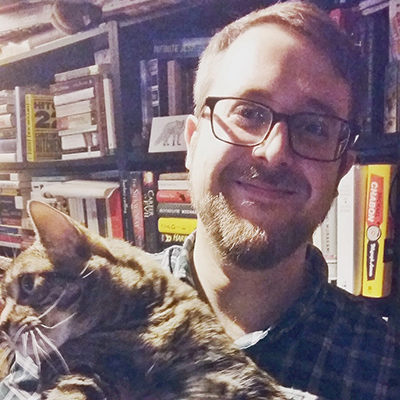
Reid McCarter is a writer and editor based in Toronto. His work has appeared at The AV Club, GQ, Kill Screen, Playboy, The Washington Post, Paste, and VICE. He co-wrote and co-edited the books SHOOTER and Okay, Hero, edits and contributes to Bullet Points Monthly, and tweets @reidmccarter.